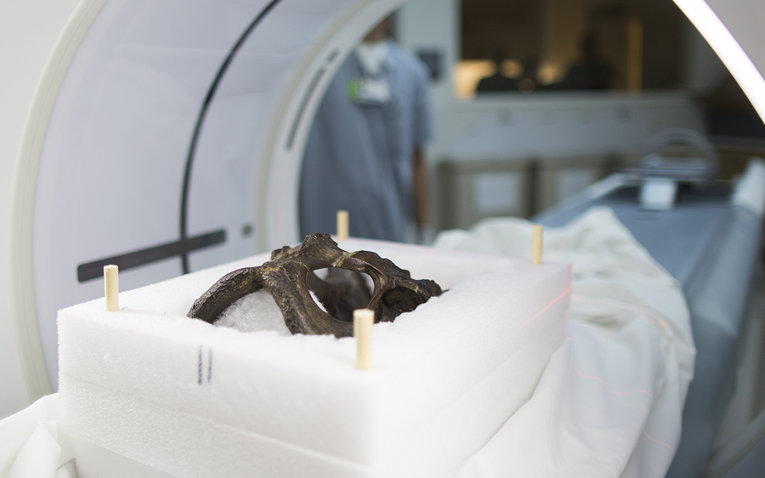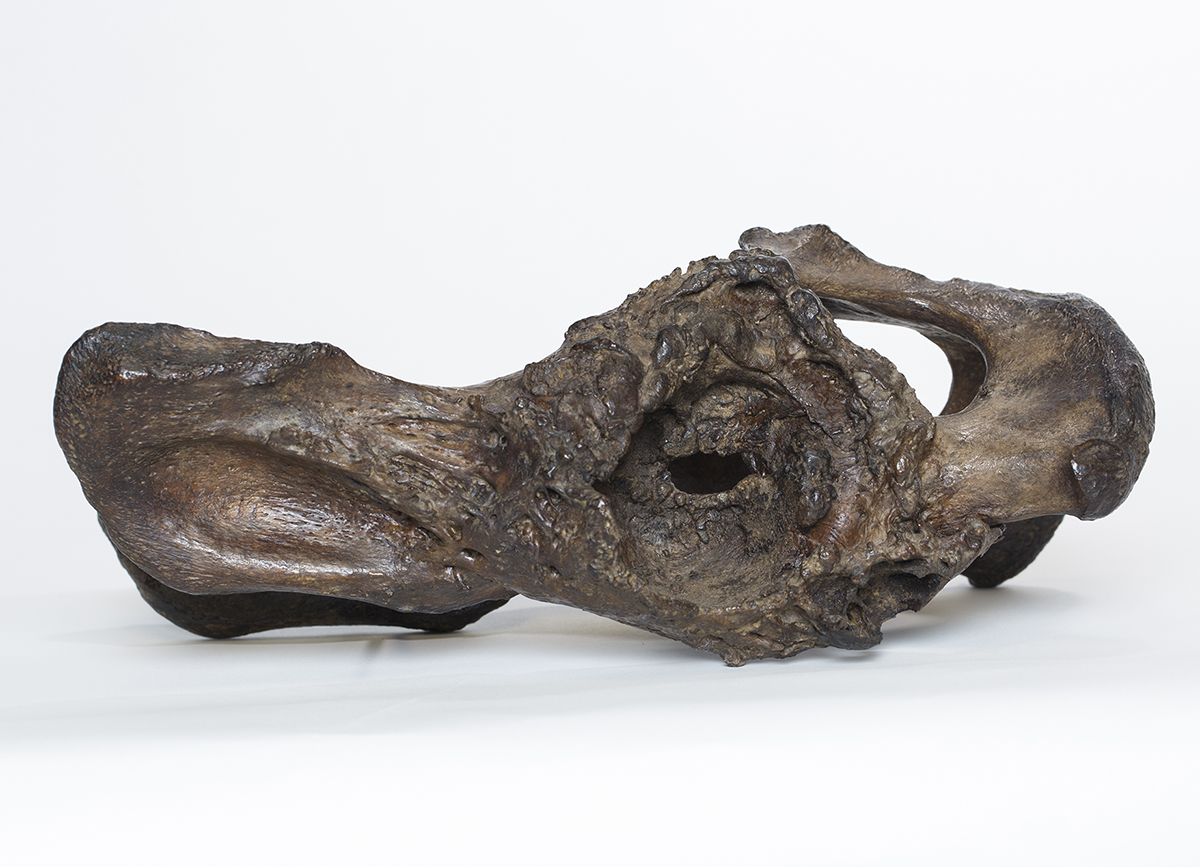Cedars-Sinai Blog
Orthopaedist Is Hip to the Ways of Saber-Toothed Cats
Feb 01, 2018 Cedars-Sinai Staff

The fossilized remains of a smilodon, or saber-toothed cat, excavated from La Brea Tar Pits, undergoing a CT Scan at Cedars-Sinai.
If hips don't lie, Dr. Robert Klapper, orthopaedic surgeon and co-director of the Cedars-Sinai Hip & Knee Replacement Program, may have the answer to a long-debated question among paleontologists: Twelve thousand years ago, when the smilodon, or saber-toothed cat, roamed what is now Wilshire Boulevard, did the predator hunt alone or in packs?
"The most modern technology allowed these bones to speak to us, and they had a lot to say."
After examining bone specimens from the La Brea Tar Pits and Museum using modern imaging technology, Dr. Klapper concluded that the lion-sized animals must have been pack animals.
A closer look
"The most modern technology allowed these bones to speak to us, and they had a lot to say," Dr. Klapper says.
Dr. Klapper, researchers from the La Brea Tar Pits and Museum, and staff from the S. Mark Taper Foundation Imaging Center used advanced CT scans to examine pelvis and thigh bones from saber-toothed cats.
"If it's a fact that this is how this animal was born, then it's a fact that someone else had to feed it."
One of the specimens they examined revealed the animal had been born with dysplasia, an abnormal development of the hip joint. It's highly unlikely this animal could have survived on its own, according to Dr. Klapper.
"If it had been limping since birth and it couldn't run fast enough to chase its prey, it had to have survived in packs,” he says. "If it's a fact that this is how this animal was born, then it's a fact that someone else had to feed it."

Dr. Robert Klapper, co-director of the Joint Replacement Program, examines results of a CT scan of a saber-toothed cat bone found near the La Brea Tar Pits.
Historical curiosity
Dr. Klapper's interest in re-examining prehistoric bones began 20 years ago, after he first visited the museum as a tourist and stood face-to-face with 400 prehistoric wolf skulls. He saw something the average person would not—that all the bones were perfect.
"I realized I'm in a museum filled with bones, which is what I do for a living," said Dr. Klapper. "I became obsessed with the questions: Where is the arthritis? Where are the fractures? Where are the abnormalities?"
Research like this could help create prostheses in new in-between sizes to help a wider variety of patients.
The curator led him to a collection of abnormal saber-toothed cat bones, deep in the bowels of the museum. This was the beginning of a years-long relationship between Dr. Klapper and the museum that led to the recent discoveries.
Aisling Farrell, collections manager for the La Brea Tar Pits and Museum, has been working closely with Dr. Klapper on the project.
"I've known that we've needed to do this for ages," she says.

Dr. Klapper and his team examined bones like this fossilized saber-toothed cat pelvis from the La Brea Tar Pits and Museum.
The future of prostheses
Down the line, Dr. Klapper hopes his work with these prehistoric bones will translate to better treatment options for human patients with dysplasia. The saber-toothed cats were larger than most humans, making them an ideal study for unusually sized prostheses.
"What if you're 7'1"? We don't have prostheses that fit that height," says Dr. Klapper. "We also don't have prostheses that fit someone small."
Research like this could help create prostheses in new in-between sizes to help a wider variety of patients.
"What we're doing is taking a CT scan to build the anatomy and then a prosthesis."


